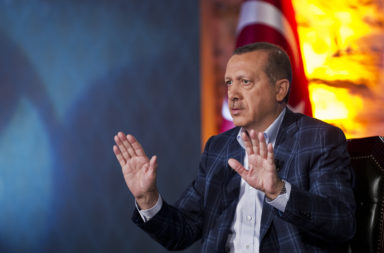After the 2016 wave of refugees to Europe, the winter of 2017 and the regional geopolitical juncture, the beginning of spring marks another respite for the countries of Europe over the problem of refugees.
But the winter of 2017/2018, that might make again the number of refugees decrease significantly is still far and, taking into account the evolution of the general situation in Europe and especially in the European Union, as well as the relations with the Russian Federation, but also the way the new US Administration will impact the world geopolitics (which, in our opinion will be better felt only as of 2018), we don’t see another more important factor leading to a significant drop in the wave of migrants to Europe.
As the situation and the evolution of the migrants in 2016 have been presented at large by the European media, we will concentrate on analysing the situation of the migrants from the Middle East where Syria, after six years of civil war, continues to be their main pool and source. The last report of the United Nations High Commissioner for Refugees (UNHCR) issued of late contains a complex analysis of the migrants’ situation and stresses the extremely difficult situation they are in. On the average, at the global level 1 of 113 people is a refugee. The conflicts, persecutions and violence made that the number of refugees/migrants reached – in the first half of last year – 3.2 million people, more than half of them coming from Syria.
Among those, 1.7 million are internally displaced while 1.5 million took refuge outside Syria’s international borders. Most Syrian refugees moved mainly to Turkey, Lebanon, Jordan and Egypt. Another important number of refugees left Iraq, Burundi, Central African Republic, the Democratic Republic of Congo, Eritrea, Somalia and The Sudan.
Among all countries, Turkey was, according to the above-mentioned report, on the first place as number of refugees – 2.8 million, followed by Pakistan (1.6 million), Lebanon (1 million), Iran (978,000), Ethiopia (742,700), Jordan (691,800). Germany was ranked the 8th with 478,600 refugees.
As share of refugees among local population, the most difficult situation is witnessed by Lebanon where for each 1,000 citizens there are 173 refugees (Lebanon inherits the old issue of the Palestinian refugees on its territory – around 452,000 in January, 2015). Jordan is on the second place, with 89 refugees per 1,000 inhabitants while in Turkey there are 35 refugees per 1,000 inhabitants.
Shelter
Stress should be laid on the fact that during the first half of the last year, the most important role in sheltering the refugees was played by countries with lower or medium income. Besides, the report cites that of the total financial needs for the refugees to five countries of the Middle East (Egypt, Iraq, Jordan, Lebanon and Turkey), the international community succeeded in securing 65% only of the funds necessary to them and their situation is extremely difficult as far as the main indicators such as food security, health, education and water supply are concerned.
In April 2016 only, the number of school age Syrian children without access to education was 916,000 (65% of the total), an in- crease by 9% compared to December 2015. 55% of the Syrian refugees live in Lebanon in conditions not meeting the standard of living, in improvised, over-populated shelters, in poor and insanitary areas. 70% of the refugees in Jordan receive less than the national standard of 100 liters of water/ person/day while in Lebanon 50% of the water distribution network is old and needs wide-range re-habilitation. There is no wastewater treatment as there is no network of disposing the solid household waste.
Burdensome for governments
Besides their own problems, the huge majority of these migrants/refugees are a heavy burden for the governments of the countries they are in not only economically but also socially. There is still a great number of refugees not registered officially but even those officially registered put pressure on the local manpower, lead to increasing violence and criminality, affect the general political and social environment of the respective countries which are already facing difficult political and economic problems.
The international community should pay a greater attention to this problem, which could worsen with difficult to assess consequences. The sharp polarization of human society due to these causes will aggravate the already (during the last years) exacerbated contradictions generating an increased instability and favouring the actions of those wanting a new division of the world.




